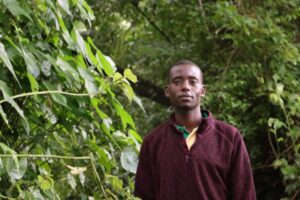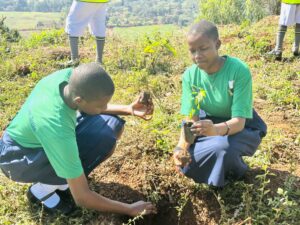By Laudato Voices | Silent Yellow Threat Devastating East Africa’s Greenery | November 22, 2025
A new ecological threat is tightening its grip across East Africa — literally. The Dodder plant, a rapidly spreading parasitic vine, is now attacking gardens, farms, and especially live fences, threatening both biodiversity and local livelihoods. As Laudato Youth, we raise an urgent alarm: this plant is becoming a serious enemy of ecology, and the region needs quick, bold intervention before the damage becomes irreversible. You may not know but its also common in most Ugandan Villages some people think its a friendly plant but its very aggressive. Have you seen it in your community? or Niegbourhood? Then a joint action is needed. Share with us your experience if you have seen it in your community and join our Laudato Voices Campaign and Tag #silentbutdangerousdoddlerplant
What Makes Dodder So Dangerous?
Dodder (Cuscuta species) is unlike ordinary weeds. It does not grow independently. Instead, it survives by draining life from other plants. Here is what makes it especially harmful:
1. A True Parasite, destroying fences and trees
Dodder cannot photosynthesize. Once its thread-like vines latch onto a host plant, it sucks out the sap — the nutrients and water essential for the plant’s survival. Over time, the host begins to wilt, weaken, and eventually die.
2. Fast-Spreading Yellow Vines
Its appearance is deceptively simple: bright yellow or orange stems, thin and stringy, spreading like tangled hair across vegetation. These vines can cover a plant quickly, wrapping around branches, stems, and leaves.
3. Weak Stems but Aggressive Tendrils
Despite its weak stems, the plant uses tendrils to climb and attach itself firmly to its host. Once attached, it sends specialized structures (haustoria) into the plant’s tissues, connecting itself directly to the plant’s circulation system — a parasitic lifeline that becomes almost impossible to remove.
4. Destroying East Africa’s Live Fences
Across many communities, live fences — often made from shrubs and hardy plants — are key to protecting homes, farms, and livestock. Dodder is now invading these fences, weakening them from the inside out. A destroyed fence means exposed gardens, wandering animals, and reduced security for rural communities.
A Growing Threat in Uganda and Across East Africa
Dodder outbreaks are being reported in more and more areas throughout the region, spreading:
• Along roadsides
• Over hedges and live fences
• Into farms and gardens
• Across wild vegetation
The plant’s seeds spread through contaminated soil, animal movement, water, and even human activities such as transporting crop residues. Children enjoy moving it from one place to another as it enjoys spreading eaasily that way. Because Dodder can grow rapidly and attach itself to multiple hosts at once, a small infestation can become a widespread ecological crisis in just one rainy season.

Why This Matters for Ecology
Dodder threatens biodiversity, soil health, and community livelihoods. As a parasitic invader:
• It kills native plants, reducing ecological diversity.
• It weakens crops and hedge species that protect soils and wildlife habitats.
• It disrupts local ecosystems that depend on healthy fences and shrubs.
• It reduces plant cover needed to prevent erosion and flooding.
In ecological terms, Dodder is not simply a weed — it is a destructive attacker weakening the foundations of local ecosystems.
Urgent Actions Needed
To stop the spread of this destructive vine, East Africa must act quickly and collectively. Some recommended interventions include:
1. Early Detection and Rapid Removal
Farmers and communities should regularly inspect live fences and gardens for yellow threads. Small infestations must be removed immediately, preferably by cutting off infected branches and burning them safely.
2. Preventing Seed Spread
Avoid moving soil or plant materials from infected areas. Communities should be trained on recognizing early signs of Dodder, especially during planting seasons.
3. Strengthening Research and Awareness
Governments, universities, and agricultural extension officers must prioritize research on Dodder control methods and share clear information with the public.
4. Coordinated Community Action
Dodder spreads quickly across boundaries. Only joint action — neighbors, parishes, youth groups, farmers — can truly stop its advance.
This is A Call to Protect Our Common Home
As Laudato Youth, we stand firm in our mission to protect God’s creation. The Dodder plant may look harmless with its thin yellow vines, but its impact is devastating. If left unchecked, it could erode the ecological balance we rely on for food security, beauty, and community well-being.

This is a moment requiring awareness, responsibility, and swift action. Let us work together to remove Dodder wherever it appears and protect our living fences, our farms, and our shared environment. Our common home needs us — and the time to act is now. Share this widely and tell us what you have learnt about it.













